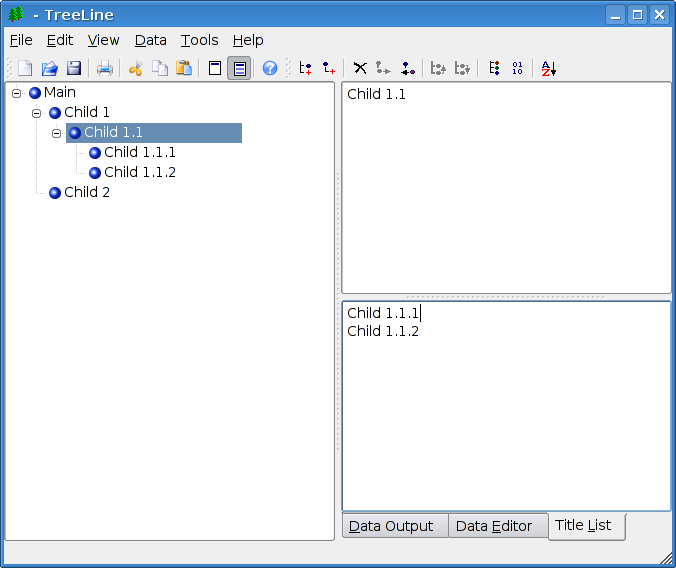TreeLine: a versatile tree-like structured custom data manager
June 10th, 2007 edited by anaArticle submitted by Miriam Ruiz. We are running out of articles ! Please help DPOTD and submit good articles about software you like !
Do you have lots of sticky notes lying around with various useful information jotted down? Or many lists of books, movies, website logins, personal contacts, or things to do? Can you find them when you need them? TreeLine is a possible anwser to all those questions. It might be an Outliner, or maybe a PIM. What it basically do is store almost any kind of information (including plain text, HTML, numbers, dates, times, booleans, URLs, etc.). The data is structured in a user-defined tree structure, so that it’s easy to keep things organized.
Each of the nodes of the tree can contain several fields, thus forming a mini-database. The output format for each node can be defined, and the output can be shown on the screen, printed, or exported to HTML. Several node types, with different sets of fields, can be included in one file.
TreeLine’s window is divided into two panes. The view on the left shows the entire tree structure, while the view on the right shows various information about the tree node that is selected in the left pane. The right pane is tabbed to show one of three different views of the data. The “Data Output” view shows the formatted text for each node and is read-only. The “Data Editor” view shows a text edit box for each data field within a node. The “Title List” view shows a list of node titles that can be modified using typical text editor methods.

View of treeline’s main window.
TreeLine files are XML by default, but there are options for automatically compressing or encrypting the files. The data can alse be exported to HTML. You can also export a XSLT file, so you can work with the XML TreeLine files. There are many other file formats in which the data can be exported and imported: Tab-delimited tables and tab-indented text files can be imported and exported. Plain text files and Treepad files can be imported. Mozilla and XBEL format bookmark files can also be imported and exported. Generic XML files can be imported and exported, allowing TreeLine to function as a crude XML editor.
The program has many other useful features, like sorting or filtering the nodes, change the node’s icon and output format conditionally based on its data, spell check the text data, or automatically arrange the data. The user interface and documentation are available in different languages.
TreeLine is coded in Python, and uses the Qt toolkit library. If spell checking capability is desired, either the GNU aspell (preferred) or ispell programs are required. Treeline is available for both Ubuntu and Debian with a simple apt-get.
June 11th, 2007 at 3:40 pm
If you use Emacs then check out org-mode http://staff.science.uva.nl/~dominik/Tools/org/ which is an excellent outliner.
August 3rd, 2007 at 1:24 pm
Show Basket, I think it’s better
http://basket.kde.org/
September 9th, 2007 at 1:01 am
I find Treeline to be an exceptionally useful program. I couldn’t get on with Basket; Treeline is, in my experience, far more stable, and much more open to customisation (in the Linux spirit).
Treeline is just a tool to allow you to organise data - you could assemble a book with it, organise an address book, sort out a family tree, a photo album, whatever… The fact that it doesn’t come with a lot of fancy gimmicks makes it work reliably and quickly.
I would recommend it as an essential tool for anyone wanting to organise their notes, files, images in a simple, efficient way. I am using it for ‘Things To Do’ lists, an address book, compiling novels, short stories and various notes, and I might even try it as a photo album…